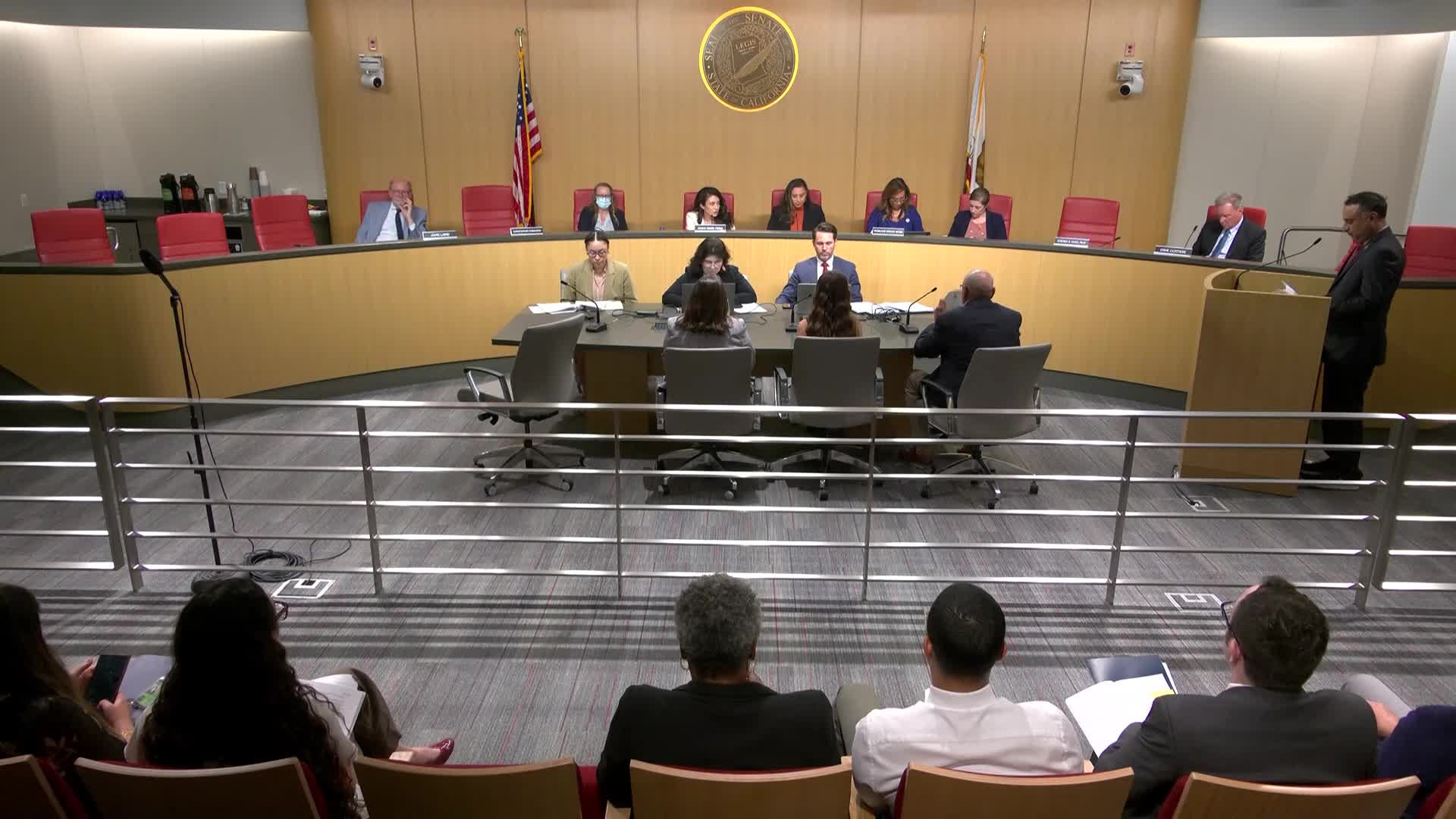Senator Silva supports AB 347 to modernize science education with digital alternatives
July 02, 2025 | California State Senate, Senate, Legislative, California
This article was created by AI summarizing key points discussed. AI makes mistakes, so for full details and context, please refer to the video of the full meeting. Please report any errors so we can fix them. Report an error »

In a recent meeting of the California State Senate Education Committee, discussions centered on the implications of a new bill aimed at modernizing educational practices, particularly in the sciences. Senator Silva expressed strong support for the bill, emphasizing the need for effective enforcement of existing laws and the potential for digital solutions to enhance educational experiences.
Senator Silva highlighted a recurring issue in California: while many laws are in place to guide educational practices, enforcement often falls short due to a lack of awareness, workforce, or funding among the agencies responsible. This concern underscores the importance of not only having regulations but also ensuring they are actively implemented to benefit students.
The bill in question seeks to leverage advancements in technology to provide alternative methods for teaching scientific concepts, particularly in areas like biology where traditional dissection practices can be distressing for some students. By incorporating digital tools and virtual simulations, the bill aims to create a more inclusive learning environment that accommodates diverse student needs and preferences.
Senator Silva noted the generational shift in how students engage with technology, suggesting that modern educational approaches must evolve to reflect these changes. The integration of digital resources not only modernizes the curriculum but also aligns with the growing demand for skilled professionals in fields such as nursing, where California faces a significant workforce shortage.
Additional comments from committee members reinforced the bill's potential to provide cost savings for school districts while offering humane alternatives to traditional dissection methods. The discussions highlighted a bipartisan consensus on the necessity of adapting educational practices to better serve students and prepare them for future careers in science and technology.
As the committee moved to advance the bill to the Senate Appropriations Committee, the meeting underscored a critical moment for California's educational landscape, where innovation and compassion intersect to shape the future of learning. The anticipated next steps will involve further evaluation of the bill's implications and its potential to transform science education across the state.
Senator Silva highlighted a recurring issue in California: while many laws are in place to guide educational practices, enforcement often falls short due to a lack of awareness, workforce, or funding among the agencies responsible. This concern underscores the importance of not only having regulations but also ensuring they are actively implemented to benefit students.
The bill in question seeks to leverage advancements in technology to provide alternative methods for teaching scientific concepts, particularly in areas like biology where traditional dissection practices can be distressing for some students. By incorporating digital tools and virtual simulations, the bill aims to create a more inclusive learning environment that accommodates diverse student needs and preferences.
Senator Silva noted the generational shift in how students engage with technology, suggesting that modern educational approaches must evolve to reflect these changes. The integration of digital resources not only modernizes the curriculum but also aligns with the growing demand for skilled professionals in fields such as nursing, where California faces a significant workforce shortage.
Additional comments from committee members reinforced the bill's potential to provide cost savings for school districts while offering humane alternatives to traditional dissection methods. The discussions highlighted a bipartisan consensus on the necessity of adapting educational practices to better serve students and prepare them for future careers in science and technology.
As the committee moved to advance the bill to the Senate Appropriations Committee, the meeting underscored a critical moment for California's educational landscape, where innovation and compassion intersect to shape the future of learning. The anticipated next steps will involve further evaluation of the bill's implications and its potential to transform science education across the state.
View full meeting
This article is based on a recent meeting—watch the full video and explore the complete transcript for deeper insights into the discussion.
View full meeting
